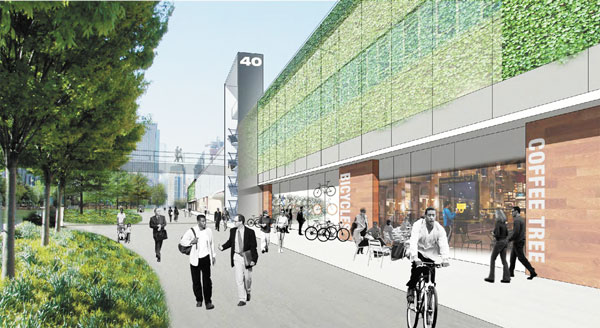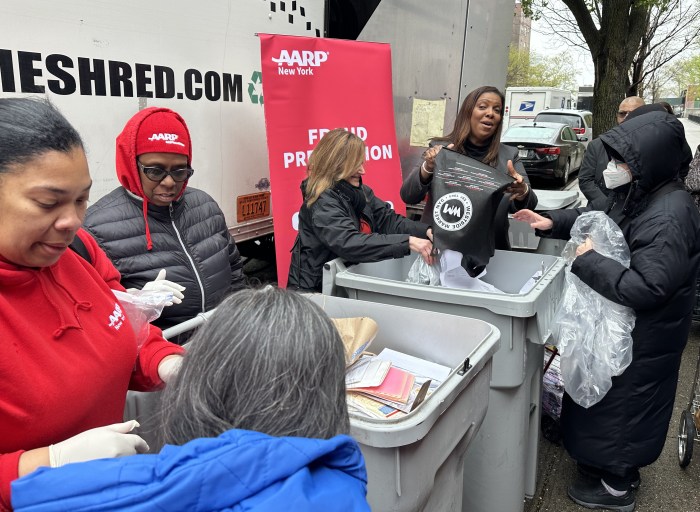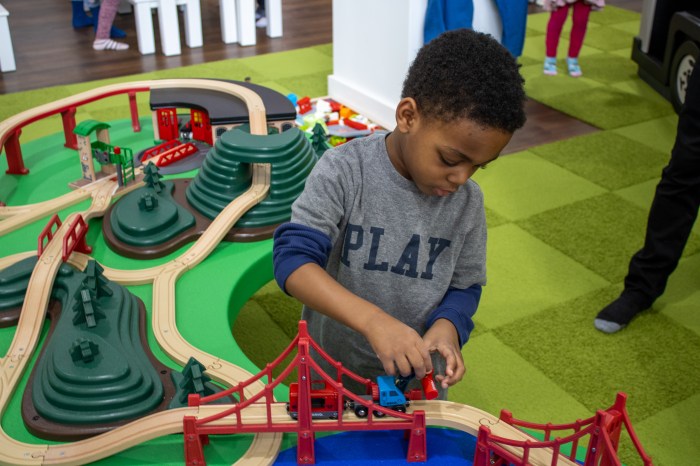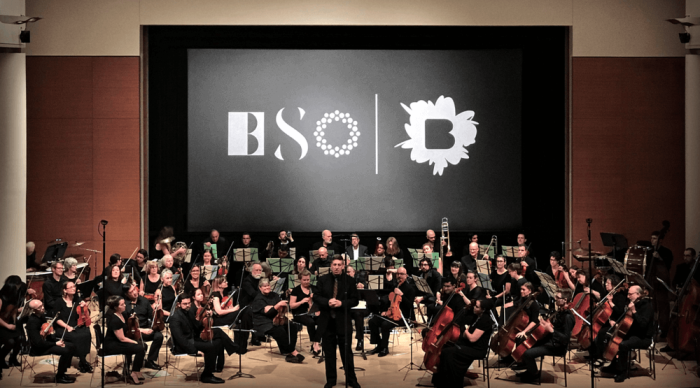
BY LINCOLN ANDERSON | Just a few weeks removed from resigning as chairperson of the Friends of Hudson River Park, developer Douglas Durst, earlier this month, presented his concept plan for Pier 40 to the Hudson River Park Advisory Council.
His partner in creating the plan, Ben Korman of C&K Partners, was out of town and could not attend. Korman, who was a vice chairperson of the Friends — the park’s chief private fundraising arm — also resigned from the organization along with Durst. The two responded to a request for proposals, R.F.P., for the eroding, 15-acre pier by the Hudson River Park Trust back in 2003.
“We are presenting this concept today as interested citizens who care about Hudson River Park and its future, not as developers interested in building out this project,” Durst told the Jan. 8 advisory council meeting, adding, “Because of our longstanding involvement in the park, our familiarity with Pier 40 and our development experience, we thought it would be helpful to explore an adaptive reuse idea for the pier.”
A study of Pier 40 last year commissioned by local youth sports leagues concluded that adding residential uses on the pier would offer the highest revenue with the lowest impact for the waterfront park, which is intended to be financially self-sustaining.
Durst stressed that his plan would minimize the impact on the pier’s parking operation and sports playing fields while providing the income necessary to cover needed capital improvements for the pier and support the operation of the larger, 5-mile-long park.
Specifically, Durst and Korman’s plan would consolidate the pier’s parking operation in less space, allowing up to 500 more cars to be added, bringing the total to around 2,000, while adaptively converting the existing pier structure for office and retail use.
Durst says annual operating income from 415,000 square feet of new office space on the pier would be $27 million, with an additional $13 million generated from 100,000 square feet of new retail uses and $6.5 million from the pier’s parking operation. The final “cash flow” — or the amount the pier would actually yield for the Hudson River Park after operating expenses, plus an annual $3 million deduction for ongoing repair work to Pier 40’s piles — would be around $10 million, by Durst’s reckoning.
Significantly, Durst has pegged the repair costs for Pier 40’s thousands of corroding steel support pilings at about half, or $50 million less, the amount calculated by the Trust. Madelyn Wils, the Trust’s president, has repeatedly said the authority stands by its cost analysis.
“We think this concept is compelling,” Durst said of his plan, “because the space available at Pier 40 for office use is exactly what is in greatest demand today by the fastest growing sector of New York’s economy. Tech firms want large floor plates, high ceilings, large windows and unconventional and interesting space.”
Going with commercial uses on Pier 40, like offices, he said, “avoids the contentious issues of alienation of parkland, housing in parks and the permitting and entitlement process for building residential. Our concept is a relatively simple way to preserve the current uses of the pier and also provide the additional revenue to help the entire park.”
Durst said for his concept plan’s financials to work, a legislative change to the Hudson River Park Act of 1998 would be needed, to extend the 30-year limit on commercial leases in the park. Residential housing either on Pier 40 or right nearby it in the park — as proposed by the Pier 40 Champions youth leagues group — would also require changing the park act, which prohibits housing.
According to Arthur Schwartz, chairperson of the park advisory council, David Gruber, Community Board 2 chairperson, is planning a major Pier 40 forum in late February at which various ideas and concept plans for the pier will be presented to the public and discussed by various stakeholders.
Schwartz said Durst’s pitch was “politely received” by the advisory council members, but that people wanted to know, “Do the numbers work?”
Schwartz personally feels that “all options in the park ought to be legal” — so as to attract the widest possible array of viable proposals. But he said a public body should also be set up, with representatives of the governor and mayor and possibly the Assembly speaker, which could put the brakes on undesirable projects, as occurred when Mayor Bloomberg’s push for a West Side stadium was defeated. However, it wasn’t immediately clear if anyone else supports this idea.
Meanwhile, in other Hudson River Park news, it was announced last week that another key player in the Friends, A.J. Pietrantone, the organization’s executive director, is resigning. He’ll stay on through the end of the fiscal year, March 31. Pietrantone oversaw the Friends’ recent morphing from the park’s main watchdog group into a fundraising vehicle.
“I’ve been here four and a half years,” he said last week. “I feel I accomplished what I set out to do, which is to get the Friends in a new direction.”
A search committee is working to recruit a new executive director for the Friends. Pietrantone said, unlike Durst’s differences with the Trust about residential housing on Pier 40 — Durst has said it wouldn’t work on the pier — he’s not departing due to any conflict.
“No, this is a personal decision, my own professional ambitions,” he said. “I’m not leaving in any kind of dispute.”
With Michael Novogratz taking over as Friends chairperson, Pietrantone said he’ll be assisting in the transition. He’ll also continue to work on the plan for a Hudson River Park Neighborhood Improvement District, or NID, to create a special, business improvement district-like taxing zone bordering the waterfront, to help raise funds for the cash-strapped park.
A second round of public hearings on the NID will be held in early February. He said the hope is for the NID to start winding its way through the City Council legislative process by the end of March, with a vote sometime later.
A second round of informational mailings on the NID has been sent to all residents living in the proposed, sliver-like district extending a few blocks inland from the park. It’s only required to be sent to property owners, but Pietrantone said they want to keep everyone in the loop.

















